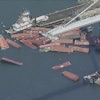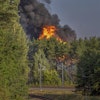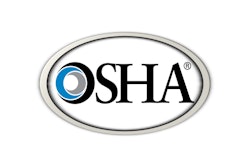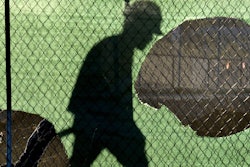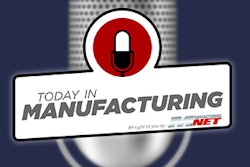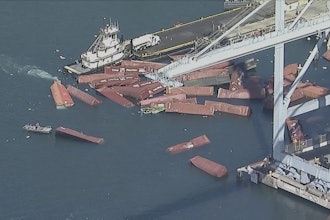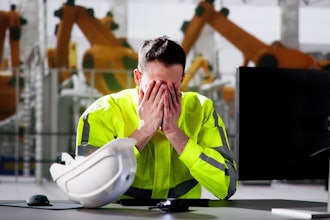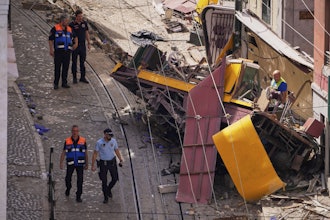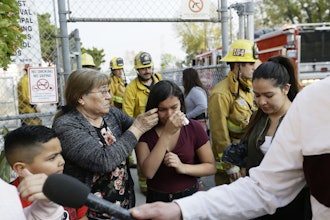The eyes, it is said, are "windows to the soul"—a quote that has been variously attributed to Shakespeare, DaVinci and others. But whoever said it first, the significance of safeguarding these "windows," in order to ensure workplace productivity and avoid blows to the bottom line, is something far too many employers overlook today.
The numbers themselves are worth paying attention to; employers in the manufacturing, transportation and warehousing sectors, for example, oversee more than 7,000 on-the-job eye injuries each year. This March, for Workplace Eye Wellness month, it's time to fix that. In this article, we'll first look at how eye injuries can negatively impact your bottom line, then turn to some simple best practices for avoiding them going forward.
Remaining in the Black—By Avoiding Black Eyes
On a daily basis, almost 2,000 U.S. workers suffer eye injuries that require medical treatment. Widening the timeline to look at a 12-month window, these precious "windows to the soul" are associated with more than 20,000 workplace eye injuries annually, with as many as 40 percent of serious injuries stemming from industries like construction, manufacturing, and mining.
More often than not, these injuries come with more than just bodily costs. From an organizational perspective, they typically entail one or more missed workdays for recovery, which means significantly decreased productivity for your business.
And in purely black-and-white financial terms, all of these eye injuries amount to a frightening $300 million in financial outlays—lost productivity, medical treatment, workers' compensation claims and more—on an annual basis.
Reducing that number is long overdue, and here are a few simple ways to get started.
Taking a Clear View of Eye Safety
Given the exorbitant cost of employee eye injuries, it's vital that employers take proactive—that is to say, protective—measures to counteract risks. And the good news is that mitigating these risks is probably easier than you think.
Effective safety practices begin with an effective job-hazard analysis to determine if more reliable methods, such as engineering controls, might eliminate or greatly reduce eye-related safety exposures. And while some studies suggest that simply requiring at-risk workers to wear appropriate protective eyewear will prevent more than 90 percent of serious on-the-job eye injuries, starting with the basics of effective hazard control allows for better control at the source of the hazard and that in turn should pay off on your balance sheet.
When deciding on protective eyewear, look for "ANSI Z87.1" on the lenses or frames. This designation indicates that these glasses, goggles or face shields meet the safety standard established by the American National Standards Institute (ANSI) Z87.1 safety standard. Ensure your job-hazard analysis identifies hazards and exposures from physical, chemical and thermal sources as well as from light sources such as UV. Matching the personal protective equipment (PPE) to the potential hazards is a must, and there are times where a combination of protection is required, such as eye protection worn together with face shields. The U.S. Department of Labor's Occupational Safety and Health Administration (OSHA) also offers a free online tool that may serve as a great resource for helping an employer determine types of protection needed according to the hazard and exposure.
From there, you'll need to identify which employees are particularly at risk, so take a high-level view of the day-to-day job descriptions for each employee. Anyone whose work involves the following materials or conditions should be considered for protective eyewear.
- employees who handle chemicals or substances that have the potential to damage the eyes upon contact such as from a splash or pressurized liquid/steam
- employees who handle small debris or particles that could come into contact with their own eyes or the eyes of bystanders— in which case, both employees and bystanders should wear protective glasses
- employees who work with machines that could unexpectedly launch projectiles into the eyes—in which case, likewise, more than one level of protection may be required
- employees exposed to radiation or light sources from welding, UV or similar exposures
Anyone whose work falls within these three categories should be equipped with appropriate eyewear. You should also keep a keen eye out for the "ANSI Z87.1" safety designation when shopping for the right equipment. Finally, take a moment to review OSHA’s standard 1910.133 to understand your responsibilities, plus key liabilities, when it comes to on-the-job eye safety.
Clearing a Pathway to Safety
OSHA's standards clearly state that employees are entitled to "working conditions that do not pose a risk of serious harm" — a right, as the existing eye injury statistics indicate, not enough employers are taking seriously. Fortunately, there are simple steps employers can take to get a handle on this situation, starting with effective job-hazard analysis, proper risk controls and the right protective eyewear for at-risk workers. But making these improvements, and effectively safeguarding both your employees and your bottom line, requires taking a clear-eyed view of the situation.
Corey Berghoefer is Senior Vice President of Risk Management & Insurance at Randstad US.



